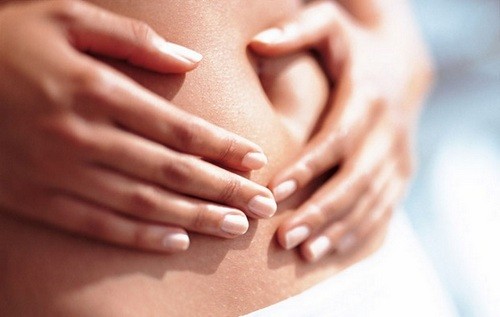Every woman who has survived pregnancy and childbirth, feels the consequences of the restructuring of the body. And this concerns not only the hormonal background, which comes back to normal only after 3-6 months, but also the structure of the organs.
The uterus and the muscles supporting it are most affected during pregnancy and during childbirth. The omission of the uterus after childbirth – this is the diagnosis that is made to many young mothers who timely contact a specialist.
Uterine prolapse is the displacement of the organ downward towards the vaginal gap. In a normal state, it is supported by muscles, which during the process of childbirth relax and do not always withstand the load. As a result, the uterus takes the wrong position, which threatens with its complete loss.
What is uterine prolapse?
The complexity of the treatment lies in the fact that a woman can live with this disease for many years and not guess about it. Often, prolapse of the uterus is asymptomatic, but in the majority it is manifested by unpleasant sensations. This pathology is most susceptible to women over 30, but young girls, especially in poor physical condition, are not immune from the disease.
Why does the uterus sink?
The omission and further prolapse of the uterus occurs for several reasons:
- Pelvic muscle injury during childbirth. During pregnancy, the muscles are subject to great strain and pressure, and the birth process only exacerbates their condition. This reason does not depend on the woman and is in the individual structure of the body.
- A difficult birth, in which medical forceps are used to remove a child. In this case, muscles can be damaged, which leads to their weakening.
- If a woman does not follow the recommendations prescribed by the doctor, namely, picks up heavy things immediately after childbirth, then the risk of omission will increase several times. A young mother should strictly follow the instructions of the gynecologist to avoid very unpleasant consequences, including preventing bleeding.
- Proper nutrition is the key to good health for mother and child. Doctors strongly recommend eating as many fresh vegetables and fruits, dairy and sour-milk products as possible. With the advent of the baby, the diet should also contain as many nutrients and vitamins as possible. If a woman does not eat properly, then there is a risk of constipation, which leads to the prolapse of the uterus.
- Heredity is practically the only reason that cannot be influenced. If a woman’s mother or grandmother after birth suffered a prolapse or prolapse of the reproductive organ, then the risk increases to 80%. Such women in labor require a special approach, special gymnastics is prescribed, and a gentle approach is used during childbirth.
- The age of a woman has a direct effect on muscle condition. The older the woman in labor, the weaker the organs. Therefore, often the prolapse of the uterus occurs in women over the age of 35 years.
- And the last reason is multiple pregnancy.

How does omission appear?
As a rule, prolapse of the uterus at the initial stage is almost asymptomatic. In most cases, a woman does not pay attention to unpleasant sensations in the abdomen and lower back, attributing the malaise to recovery after childbirth. But it is precisely the pain in the lower abdomen that should alert the young mother – this is the first signal about the pathology of the uterus. Gradually, the sensations will intensify, and cause great discomfort. The pain becomes especially noticeable during intercourse, urination and walking.
The second symptom is urinary incontinence. Many women suffer from this ailment after childbirth, but not everyone goes to the doctor trying to cope with folk remedies. However, urinary incontinence combined with painful urination cannot be ignored by specialists.
With the advanced stage, when the uterus prolapses, a woman can grope it upon palpation of the neck. Sexual intercourse begins to bring unbearable pain during and after the process.
What is the danger?
If the prolapse of the uterus is not cured in a timely manner, then its complete loss is possible. In this case, surgical treatment is performed, which often requires removal of the uterus.
The displaced uterus presses on the bladder and intestines, disrupting their work. There is also a risk of infection in the internal organs, which threatens more serious diseases. Therefore, it is necessary to treat the prolapse of the uterus as early as possible, while there is the possibility of using conservative methods.

Uterine prolapse
Uterine prolapse usually occurs after a strong prolapse of the organ. But often the pathology manifests itself immediately after childbirth. There are two types of uterine prolapse: complete and incomplete. In case of incomplete prolapse, a part of the uterus is located outside the vaginal gap. With full, it drops out completely. The first option lends itself to surgical treatment, while the second shows organ removal.
Uterine prolapse may not manifest itself. Only by straining and urinating does a woman feel a little discomfort. In severe cases, soreness intensifies, manifests itself during an act of defecation and sexual intercourse.
Uterine prolapse must be treated! The entire reproductive system suffers, there is a risk of a malignant tumor and various infections.
It is not difficult to diagnose a pathology with a visual examination on a gynecological chair. With complete loss, the woman herself can grope for the uterus, and the sexual partner feels a “barrier” when penetrating.
Treatment
With prolapse of the uterus, two types of treatment are used:
- conservative;
- surgical
Let’s consider both options in detail.
Conservative treatment
Surgery can be avoided if the uterus has moved down, but has not yet reached the vaginal gap. In this case, doctors recommend special physical exercises that allow not only to return the organ to its place, but also to strengthen the pelvic muscles.
Also, ointments containing estrogen are prescribed to a woman. It allows you to improve the condition of the muscles and strengthen them to maintain the uterus.
It will be useful to conduct a gynecological massage, which is done by a specialist. The time of conservative treatment depends on the condition of the woman’s body and the location of the uterus.
Surgery
If the uterus has reached the genital fissure, then the only method of treatment is surgery. For this, plastic strengthening of muscles and ligaments is performed. The operation carries the risk of damage to the uterus, but to preserve the reproductive function, this is the right decision.
If a woman does not plan a pregnancy or organ preservation is not possible, then an operation is performed to remove the uterus.
When the uterus prolapses, the use of special rings and bandages to support the organ is indicated. However, wearing them for a long time is not recommended, so this is only a temporary relief. Most often, a woman undergoes plastic surgery, in which the uterus returns to its previous place and the ligaments are connected. After the operation, it is contraindicated to lift weights and live sexually for about 3 weeks. After this time period, a woman will be able to return to her usual image.
Folk remedies
In folk medicine, there are many remedies for treating a lowered uterus. But their use is advisable only after consulting a doctor. Folk remedies should be used in conjunction with conservative treatment, which can increase the chances of a full recovery.
Quince broth is widely used in folk medicine to maintain the muscles of the intestines and uterus. For this, douching is carried out for 30 days or until complete recovery. Quince has practically no contraindications, but a young mother should not use this herb for uncontrolled treatment.
Well help the bath from the leaves of dope. The benefits of this herb became known many years ago and to this day is widely used even in professional medicine.
Prevention
It is much easier to prevent uterine prolapse than to treat pathology later. A woman should carefully monitor her health when planning a pregnancy. Good physical preparation, regular performance of elementary gymnastics has a positive effect on the general condition of the body, and in particular on the muscles of the small pelvis. During pregnancy and immediately after birth, a woman should protect herself from any physical exertion. If the birth was difficult, then the first month is not recommended even while standing to hold the baby in her arms. Feeding should be done while sitting or reclining.
It is equally important to prepare the uterus and muscles for the upcoming birth. To do this, do special exercises as a prevention of uterine prolapse. A similar method is suitable for treating an already displaced organ.
Exercises for treatment and prevention
Exercises can be performed anytime, anywhere. They perfectly strengthen the muscles of the pelvis and vagina, being an excellent preparation for childbirth.
Intimate gymnastics helps increase sensitivity during intercourse, relieves tension and improves libido.
- Squeeze the muscles of the vagina to its full strength, count to 10 and relax. Repeat after 10 seconds. This exercise must be repeated 20-30 times.
- Squeeze sharply on inspiration and immediately relax the muscles of the vagina as you exhale. Repeat 50 times.
- Slowly tighten the vagina, compressing all the muscles of the genitals and relax. Repeat 10 times.
Uterine prolapse after childbirth is a serious pathology that requires complex treatment. Run the disease, referring to employment or lack of discomfort is impossible. Every young mother should be examined by a gynecologist 1-2 months after birth to make sure that there are no pathologies and various diseases. This is the only way to maintain the health of the reproductive system for many years.



